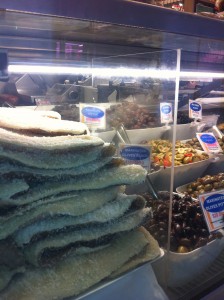Yippee, Spring is here. Which means that the first of the fresh asparagus is starting to hit the shops. Don’t wait, eat as much as you can as the season is short.
Originating in the Eastern Mediterranean, with a distinctive earthy, leafy flavour, asparagus grows wild in some parts of Europe. Greeks and Romans used it as a medicine; it apparently cured bee stings, eases toothache and restores eyesight. Asparagus also has a reputation for being a ‘real stinker’ and a source of endless debate at dinner parties! In some countries people prefer to eat white asparagus which has been grown out of the sun, but Kiwis like it green and there is little, if any, white grown here although purple asparagus is becoming increasingly available.
The North Island’s temperate climate is ideal for the production of sweet tender asparagus spears, the alluvial strip between the Tararua Ranges and the Tasman Sea north of Wellington providing perfect growing conditions. There are over two hundred commercial growers in New Zealand, producing 5,000 tonnes of asparagus every year. Harvested August through to January, peaking in September, about one fifth supplies the local export and the rest is exported fresh (mainly to Japan) or processed into canned, bottled or frozen product.
Fresh asparagus should not be rubbery and should ‘squeak’ when the spears are rubbed together. Choose straight firm green stems with trimmed ends. Asparagus has a high water content and should be stored in a refrigerator, preferably with the ends wrapped in wet paper towels or in plastic bags to prevent dehydration.
Asparagus is an excellent source of antioxidants, especially phenols, carotenoids and vitamin C. One of the best natural sources of folate, asparagus is also a source of fibre and small amounts of many other vitamins and minerals. If the asparagus is thin and fresh it can be used raw in a salad, otherwise blanching it will produce the best results. Purple asparagus is often eaten raw as it is sweeter and more tender than green. Lemon juice will help retain the purple colour and it should be cooked quickly. For maximum flavour, asparagus should not be overcooked and should be tender but still slightly crisp. It can be steamed, stir-fried, microwaved or boiled. Asparagus is also great on the barbeque or served with a simple sauce or dressing. It can also be used in tarts, soups, salads and other dishes.
Chargrilled Asparagus with Easy Hollandaise
This is what the French do best; celebrate one perfect ingredient eaten at its prime and in season. Take a delicate flavour like asparagus and enhance it with the richness of the Hollandaise.
Serves 4 as an entrée or 6 as a vegetable
2 bunches of fresh asparagus
Easy Hollandaise – Makes 600ml
175g butter
2 tablespoons wine vinegar
4 tablespoons lemon juice
6 large egg yolks
A large pinch of salt
6 rounded tablespoons fresh chives, snipped
- Melt butter slowly in a small saucepan.
- Place wine vinegar and lemon juice in another pan and bring to the boil.
- Meanwhile chargrill or barbeque asparagus for 3 to 4 minutes. Set aside and keep warm.
- Blend egg yolks in a food processor or liquidiser, then – with the motor still running – gradually add the hot lemon and vinegar.
- When the butter reaches the boil, trickle this in very slowly, with motor still running until it is all added and the sauce is thickened.
- Stir in snipped chives.
- Serve immediately with asparagus. (Will also keep for up to 2 days if covered with glad wrap and refrigerated.)
This is time for happy wines, and the happiest of them all is the Pinot Gris. The Birdman at Bird Wines has sneakily managed to make one that is a beautiful peachy colour while still being dry, an incredibly difficult combination to achieve.
I keep being asked for my seasoning recipe, and I keep forgetting to post it here. Sorry about that.
So here goes:-
Flakey salt
course cut pepper
mustard seeds
poppy seeds
cumin seeds
dried chilli
celery seeds
coriander seeds
fennel seeds
nutmeg
clove
Turmeric
ginger
Method
make up 80 % of the final quantity with salt and pepper. the remaining 20% to be some or all of the remaining spices. I tend to use more cumin and chilli in the winter as they are warming spices and more celery seed in summer as it is cooling. Make sue you have the turmeric and ginger for the health benefit. Use a pestle and mortar to roughly break down the seeds.
Mix all together in a heat proof bowl. Heat a large pan on a medium to high heat, when hot add a tablespoon of veg oil (rice bran would be good) and tip all the seasoning in. Being careful not to burn, panfry the seasoning to release and amalgamate the flavours,stiring all the time. Should take about 5 minutes depending on quantity (use your nose to sense the flavour release). Once good and hot tip back into the heatproof bowl and allow to cool before putting in a sealed contained in the pantry.
I’m just back from foodie heaven, that being Melbourne. I had three days of cooking shows to do at a food extravaganza put on by ESSE stoves with Paul Mecurio. The shows were great fun but the real joy is being able to immerse myself in Melbourne’s food culture. We headed straight from the airport to the foodie temple that is Victoria Street Market. Wow what a place, it seemed like acres of beautiful fresh produce and halls of the finest fish, meat and deli products all just on the edge of the central city. As a chef I’m so jealous of my colleagues in Melbourne, what a pleasure it would be to be able to choose a menu from that astounding array every morning.
Speaking of restaurants, I must just mention the best Tapas that you’ll ever eat outside of Spain is in a restaurant called Movida. They have four restaurant spread around the city, but search out the original one half way up a graffiti strewn alleyway next-door to the theatre on Flinders, it is worth the effort.
This week I wanted to share with you an old classic that uses a wonderful, if rarely used, cut of meat. Beef cheeks are one of the most astounding flavours and so cheap to buy. Yes I do mean cheeks, the ones near the mouth not the ones at the other end!
With meat cookery you need to look at the amount of work a muscle does to understand its flavour and cooking method. Put simply, the more work a muscle does the better the flavour but the tougher the texture, that’s why the relatively unworked fillet is a fantastic texture even when cooked very quickly but frankly a bit boring in the taste department, which is why we tend to marry it to highly flavoured sauces (like peppercorns).
With beef cheeks, the muscle work rate is phenomenal, which explains the truly extraordinary flavour. If you’ve ever spent some time watching a cow you’ll know that it’s the one muscle that is constantly in motion. The only thing left is to deal with the texture, probably the perfect role of the slow cooker.
Braised Beef Cheeks
2 beef cheeks
300ml hearty red wine
1/2-1 tsp Chinese five spice
2 tbsp butter or even better, duck fat
salt and pepper to taste
2 cloves garlic, sliced very thinly
1. In a very hot heavy pan (cast iron would be the best option), sear the cheeks on both sides for approximately 1-2 minutes per side. Remove from pan and set in a slow cooker.
2. Pour the wine over top, sprinkle the cheeks liberally with Chinese five spice, toss in the butter (or duck fat), season to taste with salt and sprinkle the garlic over top.
3. Set the slow cooker to “low” and allow to cook uninterrupted for 8 hours.
4. When finished, remove from slow cooker gently (as they will be delicate and fall apart easily at this stage, and serve with accompanying vegetables or mashed potatoes.
Wine
This is such a gloriously rich, full flavoured dish that you can bring out the big, hearty red wine. For me the extraordinary blend of grapes in the Célèbre 2007 from Ata Rangi in Martinborough is a blast of joy.
Following on with our preparations for Christmas, now is the time to get the Christmas cake ready. If, that is, you want a traditional one. For those of you that want a fast cake I’ll share a really great recipe nearer to the time.
This recipe for a mature Christmas cake comes from the most extraordinary tea rooms in England, Bettys Tea Rooms started in Harrogate in North Yorkshire over one hundred years ago and now have six foodie shrines spread around Yorkshire, all still run by the descendants of the original Swiss founder.
As a child, we would go to Bettys for my mother’s birthday and I will always remember pressing my nose to the window, staring at the unbelievable array of breads and cakes. The choice of traditional breads with names that I could barely pronounce was staggering and the perfection of the cakes, tarts and sweet treats completely inspirational. Now usually our memories play tricks on us, but Bettys is different, we took the kids there last year and it was like I was transported back to my own childhood only this time it was all four of us with our noses pressed to the window.
This Christmas cake recipe is theirs and frankly is hard to beat, to see the glistening glace fruits crowding the top hark back to an older time when families would save all year to be able to buy the spices and fruits that we take for granted today.
Christmas Cake
For the cake
250g butter, at room temperature
250g caster sugar
4 large eggs
250g plain white flour
75g ground almonds
pinch of salt
250g golden sultanas
125g glace pineapple, finely chopped
75g crystallized ginger, finely chopped
185g whole mixed peel (lemon, orange and citron) finely chopped
50g angelica, finely chopped
125g chopped walnuts
50ml sherry
grated zest and juice of one lemon
250g naturally coloured glace cherries
For the decoration
3-4 tablespoons apricot jam
3-4 tablespoons water
glace fruits (orange and lemon slices, pineapple, apricots, figs, cherries, angelica)
Method
- line the bottom and sides of a 20cm cake tin with baking parchment. Preheat the oven to 140°C (gas mark 1)
- Place the butter and sugar together in a large bowl. Beat until pale and creamy.
- Add the eggs, one by one, mixing well.
- Combine the flour, almonds and salt together and add to the mixture gradually.
- Next add the sultanas, pineapple, ginger, peel, angelica, walnuts, sherry and lemon juice and zest. Mix well, then gently stir in the cherries so that they remain whole.
- Transfer the cake mixture to the cake tin, flattening the surface with a spatula. Bake in the preheated oven for approximately 3 hours. The cake will be ready when it is golden brown on top and firm to the touch, but don’t be afraid to give it a little longer if it doesn’t appear to be ready. To check, pierce the centre with a thin skewer – it should come out clean.
- When cool enough to handle, remove from the cake tin and leave on a cooling rack until completely cold. Wrap in tin foil and place in an airtight container to mature until needed. This should be placed in a cool dark corner of your pantry.
- The day before you need it, decorate it. Depending on how boozy you like your Christmas cake you can add 50ml of brandy (or spirit of your choosing) to the top of the cake and allow to soak in before the decoration begins.
- To decorate, place the apricot jam and water in a small pan over a low heat. Stir well until you have a thick glaze. Brush the top of the cake with a generous quantity of the apricot mixture, then lay the glace fruits on top in a design of your choice. Allow to cool, then brush the top of the fruits with a little more apricot glaze.
Traditionally in Yorkshire this would be served with Wensleydale cheese, which seems a little odd but has to be tried to be believed. Going the full hog why not match it all to a glass of Dark Spice Liqueur from 8th Tribe, our glorious Bay of Plenty distille
Seems odd doesn’t it to be talking about Christmas so soon, but in a cooking sense it all begins now with the Christmas cake and puddings needing time to mature.
For those of you that used to buy my Christmas puddings in the old Deli days, I’ve always promised to share the recipe and for some reason never got around to it. This pudding is light and full of flavour unlike the dark, heavy ones that use shredded suet. For me these work so much better for our New Zealand Christmas, leaving you able to move afterwards instead of anchored to the sofa.
There are many people who claim to loathe Christmas pudding, in most cases I suspect that they have never tasted a real one, only the heavy and flavourless commercial version. Food processors offer us a vast range at different prices and qualities but this one should come with a warning, once you’ve made it at home you’ll never be able to buy one again.
Enjoy
The ‘Ultimate’ Christmas Pudding
Makes 2 x 1.8kg puddings
350g grated fresh breadcrumbs
625g each of raisins and sultanas
560g Demerara sugar
175gchopped almonds
175g mixed peel
250g grated cold butter
1 tsp mixed spice
20g each grated lemon zest and orange zest
175g glace cherries
4 large eggs
4 tablespoons lemon juice
200ml cognac
175ml sherry
Method
Mix dry ingredients in a large bowl, add the liquid ingredients and mix well again. Fill 2 buttered pudding basins and tie foil across the top with a pleat to allow the pudding enough room to expand. Steam in a covered pan with water coming halfway up the basin sides for 6 hours, topping up water as necessary. Store in an airy place for 3 months to 1 year. Steam for 1 hour on day of eating or microwave for 5 to 6 mins.
Like snuggling around an open fire in winter, the Dark Spice liqueur from Distillerie Deinlein is warm enough to make you hope for bad weather and cold evenings every day. Its warm, smooth, seductive flavours come from the most unlikely hero …..the walnut! And what’s more it’s local.
Yes I know what you’re thinking, burgers are fast food and what is he going there for? Well it’s simple really they taste great and are a load of fun. In some ways this is the problem with modern food, the fast food industry gets hold of a good idea and then cheapens it to the point of extinction. Where the reality is that, made well, burgers are really good for you, especially if you sneakily pack as much vegetable content into them as you can get away with. It’s all about knowing what’s in you’re food, especially the fun food.
As a chef I spend most of my time trying to dream up recipes using the most elaborate ingredients possible and then attempting to come up with new and innovative ways to cook and present them. This is all great fun and is a major part of cooking these days, but sometimes food just needs to be there for the family in a fun and nutritious way. Try to avoid the pre minced stuff on the supermarket shelves and instead go to a real butcher and ask them to mince some lean beef for you, this way you know you are getting good lean beef instead of any old rubbish packed with fat.
Easy Burgers
500g minced beef or lamb
2 onion, diced finely
3 clove garlic, chopped
Salt & pepper
Chopped fresh herbs or dried herbs
2 tbsp plain flour
1 egg, beaten
Avocado oil
Optional additions:
2 red capsicum, diced finely
150g mushrooms, diced finely
1 courgette, grated
1 carrot, grated
1 teaspoon fresh Thyme, chopped
1 tablespoon fresh parsley, chopped
Method
Mix all ingredients together well. Take large spoonfuls of mixture, shape into balls, place on a floured surface and flatten with your hand. Heat avocado oil in a frying pan and add 2 or 3 burgers at a time. Cook both sides until crisp and brown. Alternatively, the burgers can be cooked on a BBQ or finished off in the oven at 180°C.
Split the hamburger buns, place the burger inside with lettuce, tomato, avocado salsa (see below), cottage cheese and serve.
Avocado Salsa
2 ripe avocado, diced
2 de-seeded and finely chopped red chillies
2tsp chopped fresh coriander
4 tomatoes de-skinned, deseeded and diced
2 tbsp Thai fish sauce
Pinch salt
Zest & juice 1 lime
Method
Place all ingredients in a bowl, mix well and leave at room temperature for at least 30 minutes to let the flavours develop.
Burger Buns
Ingredients
500g strong white bread flour
20g instant yeast
20g sugar
10g salt
60g unsalted butter
280ml warm water
Optional
2 egg white
4 teaspoons of sesame seeds
Method
Weigh out the flour, salt, sugar and yeast into a large mixing bowl. (If your yeast needs activating in water, follow the instructions on the packet and subtract whatever water you need to use from the 280ml water listed above.) Mix them together so that they are evenly distributed.
Heat the butter (either in the microwave or in a pan) so that it has just melted, it should be just warm, not hot. Weigh the water into the mixing bowl with the dry ingredients, pour in the melted butter and mix it all together (using your hands) to form a dough.
Tip the dough out on to a floured work surface and knead it until it has formed a smooth, elastic dough. It will be sticky at first but will become smooth as you knead it. Form the dough into a ball, lightly oil the inside of the mixing bowl and put the ball of dough back into the mixing bowl. Cover the bowl with a piece of cling-film/plastic-wrap, put the bowl somewhere warm and leave it to prove until it has doubled in size (it depends on how warm it is but this usually takes 1 – 2 hours).
When the dough has doubled in size, tip the dough out of the bowl, cut it into eight and shape each into a ball. Leave the balls of dough on the work-top, cover them with a piece of lightly oiled cling-film/plastic-wrap and leave them to prove for a second time until they have doubled in size.
When the balls of dough have doubled in size, put them onto a lightly oiled baking tray and gently press them down to form the burger bun shape. Optionally, brush the top of each disk of dough with some egg white and sprinkle each with ½ teaspoon of sesame seeds.
Heat the oven to 170°c.
Leave the buns to rise for the final time until they have puffed up (not necessarily doubled in size but close).
When they are cooked, take the burger buns out of the oven and leave them on the tray until they have cooled to room temperature (when they come out of the oven they will feel very firm but leaving them to cool on the tray greatly softens the crust).
When they are cooled, cook your burgers an
Just had a great weekend at the Home and Leisure expo in Tauranga. All a bit different for me as I was in costume as Captain Cook, basically story telling with food.
 Almost 250 years ago the Admiralty was asked by the King to provide a ship and crew to transport the Royal society scientists to Tahiti to witness the passage of Venus through the Southern Hemisphere. As you can understand the idea of using a ship of the line with a seasoned crew during a time of war to go on a suicide mission to the dark side of the planet had little appeal, however how do you turn down the King? Simple answer you don’t. What you do is find a thoroughly expendable officer with no wartime credentials, give him a crew of misfits and a secondhand merchant ship.
Almost 250 years ago the Admiralty was asked by the King to provide a ship and crew to transport the Royal society scientists to Tahiti to witness the passage of Venus through the Southern Hemisphere. As you can understand the idea of using a ship of the line with a seasoned crew during a time of war to go on a suicide mission to the dark side of the planet had little appeal, however how do you turn down the King? Simple answer you don’t. What you do is find a thoroughly expendable officer with no wartime credentials, give him a crew of misfits and a secondhand merchant ship.
Enter Lieutenant James Cook, The son of a farm laborer from the north east of England. A man truly suited to the role of expendable explorer. Having first gone to sea from the village of Staithes and then on to the collier ships in Whitby, he joined the Royal Navy in his late twenties as an ordinary Seaman where he proved to be a fast learner and an exquisite cartographer. Who better to send on a pointless diversion than an upstart who happens to draw pretty maps, if he doesn’t make it back who cares? and if he does at least they’ll have some new charts. Only problem is that he isn’t an officer, he’s a bosuns mate and cartographer, The solution is easy, make him a lieutenant and send him.
So starts the first of James Cook’s three voyages, a catalogue of failure and glory traveling hand in hand. His orders for the first voyage were to plot the passage of Venus from Tahiti and then, in his secret orders, to travel west and find the great southern continent. They later found that his calculations for the transit were inaccurate and he couldn’t find Terra Australis.
The now Captain Cook’s second voyage didn’t fare much better, sent back to find the great southern continent that he had obviously missed on his first voyage, all he managed to do was prove that it did not exist.
Finally to his third voyage. The Admiralty had been trying to find the Northwest Passage, a short cut to Asia, from the Atlantic, with no success and so decided to try from the Pacific. Who better to send than the same expendable officer who had been there twice before? Yet again all Captain Cook managed to do was prove that the passage did not exist, and then to cap it all off he failed to stay alive, dying on a beach in Hawaii beaten to death by the natives who only days earlier had lauded him as a god.
This however only tells half the story. Without doubt, Captain James Cook was one of the world’s most glorious explorers. During his three Pacific voyages his wooden ships circled the world, went further north and further south than any wooden sailing ship had ever been before, or since. Navigating the ice bound fringes of the Antarctic and arctic circles, where the sails froze solid and the rigging hung with icicles. They sailed in tropical seas where they survived hurricanes, lightning strikes and volcanic eruptions; edged around uncharted lands and islands always in danger of shipwreck; and in one harbour after another, found unknown people. For any time and in any culture these were remarkable voyages. Like the first men in space they were truly off the map surviving on their skills and wits.
Along the way he managed to create charts of such exquisite accuracy that some are still in use today. His voyages epitomize the European conquest of nature, fixing the location of coastlines by the use of instruments and mathematical calculation, classifying and collecting plants, animals, insects and people. In effect one man named, or more accurately renamed, one third of the globe.
As if this wasn’t enough, he was the first ships captain to beat the maritime scourge, scurvy. Before Cooks first voyage any ship at sea for more than six weeks would routinely lose a third of its crew to scurvy, in Cooks nearly three years off the map he didn’t lose one. Through his own diligence and dedication to the health and wellbeing of his crew he became the ultimate global hunter gatherer. At every opportunity he had to restock his supplies of food and water often with things never before seen by Europeans.
Historically Sunday would have been the working family’s only day off and probably the only meat day as well. Everyone was expected to attend church in the morning and so the slap up meal was both the best meal of the week and a reward for being so virtuous. In fact during the Middle Ages in England the Lord of the Manor would provide a roast Ox for his serfs, thus starting the tradition of the Sunday roast.
In the days before ovens in every home, the poorer families would have used the local bakery, popping their joints of meat in the big bread oven that was still cooling down from the early morning baking. They would pick up their perfectly roasted meat on their way home from church.
Roast Leg of Lamb
Serves 6 – 8
1 Leg of NZ Lamb
4 large cloves garlic, peeled and sliced into 3
75g tinned anchovies
1 bunch rosemary
75g softened butter
Juice of 1 lemon
Method
Stud the surface of the lamb with garlic, rosemary and half the anchovies. Beat the butter, lemon juice and remaining anchovy and spread over the skin. Place on a preheated hot barbeque for 5 minutes to sear, then turn down heat and cook with lid down for a further 50 minutes until core temperature reaches 62˚C (for medium rare.) Rest and serve
Panfried Snapper and Quinoa Salad with Roast Kumara
Serves 4
4 Snapper Fillets
1 red capsicum, chopped roughly
1 yellow capsicum, chopped roughly
1 red onion, sliced
2 Kumara rough chopped
1 tablespoon olive oil
2 cloves garlic
1 cup quinoa (pronounced ‘keenwa’)
Salt & pepper
1 cup spinach, chopped roughly
Vinaigrette dressing (see below)
Method
Roast chopped vegetables (except spinach), garlic and olive oil in a pre-heated oven at 180°C for 30 to 40 mins until golden brown. Meanwhile, wash quinoa with cold water in a sieve and squeeze dry in a clean tea towel. Place quinoa in a pan, place over a medium heat and fry until lightly toasted. Cover with boiling water or stock and simmer gently until all the liquid has been absorbed. Remove vegetables from oven and add to quinoa with spinach and seasoning. Add dressing and mix well. Place in a bowl with panfried Snapper on top and serve.
Vinaigrette
Makes 400ml
½ tablespoon smooth Dijon mustard
50ml red wine vinegar
50ml balsamic vinegar
100ml hazelnut oil
100ml avocado oil
100ml olive oil
½ teaspoon salt
6 turns white pepper
1 clove garlic, peeled and crushed
Method
Place all the ingredients into a blender and blitz for 60 seconds. Strain through a fine sieve.
Berry Tansy
I love the sense of history and tradition that goes with food – the small village of Egton Bridge, near where I grew up in North Yorkshire, still holds an annual Gooseberry Show which dates back to 1800! Tansies are a type of sweet omelette, originally named after the herb, tansy, which was used in this dish in the 15th century.
Serves 4
25g unsalted butter
200g berries,
Freshly grated zest of 1 orange
3 tbsp sugar
25g breadcrumbs
3 eggs, separated
40ml cream
¼ tsp freshly grated nutmeg
2 tbsp apricot liqueur
- Melt the butter in a frying pan and when foaming add the berries and orange zest. Cook gently over a low heat until the fruit begins to soften (about 2 minutes) then add the sugar, mixing well, and cook until the sugar melts and the mixture becomes syrupy.
- Add just enough breadcrumbs to soak up the syrup and stir.
- Meanwhile add the egg whites to a clean bowl and whisk into soft peaks.
- In a separate bowl beat together the egg yolks, cream, nutmeg and liqueur. Slowly add the egg yolk mixture into the gooseberry mixture, stirring slowly.
- Fold-in the egg whites and continue cooking on very low heat until the mixture sets.
- If necessary, place the tansy under a low grill or use a blow torch to set the top.
- Dust with icing sugar, decorate with a few sprigs of mint and serve.
Yippee, Spring is here. Which means that the first of the fresh asparagus is starting to hit the shops. Don’t wait, eat as much as you can as the season is short.
Originating in the Eastern Mediterranean, with a distinctive earthy, leafy flavour, asparagus grows wild in some parts of Europe. Greeks and Romans used it as a medicine; it apparently cured bee stings, eases toothache and restores eyesight. Asparagus also has a reputation for being a ‘real stinker’ and a source of endless debate at dinner parties! In some countries people prefer to eat white asparagus which has been grown out of the sun, but Kiwis like it green and there is little, if any, white grown here although purple asparagus is becoming increasingly available.
The North Island’s temperate climate is ideal for the production of sweet tender asparagus spears, the alluvial strip between the Tararua Ranges and the Tasman Sea north of Wellington providing perfect growing conditions. There are over two hundred commercial growers in New Zealand, producing 5,000 tonnes of asparagus every year. Harvested August through to January, peaking in September, about one fifth supplies the local export and the rest is exported fresh (mainly to Japan) or processed into canned, bottled or frozen product.
Fresh asparagus should not be rubbery and should ‘squeak’ when the spears are rubbed together. Choose straight firm green stems with trimmed ends. Asparagus has a high water content and should be stored in a refrigerator, preferably with the ends wrapped in wet paper towels or in plastic bags to prevent dehydration.
Asparagus is an excellent source of antioxidants, especially phenols, carotenoids and vitamin C. One of the best natural sources of folate, asparagus is also a source of fibre and small amounts of many other vitamins and minerals. If the asparagus is thin and fresh it can be used raw in a salad, otherwise blanching it will produce the best results. Purple asparagus is often eaten raw as it is sweeter and more tender than green. Lemon juice will help retain the purple colour and it should be cooked quickly. For maximum flavour, asparagus should not be overcooked and should be tender but still slightly crisp. It can be steamed, stir-fried, microwaved or boiled. Asparagus is also great on the barbeque or served with a simple sauce or dressing. It can also be used in tarts, soups, salads and other dishes.
Chargrilled Asparagus with Easy Hollandaise
This is what the French do best; celebrate one perfect ingredient eaten at its prime and in season. Take a delicate flavour like asparagus and enhance it with the richness of the Hollandaise.
Serves 4 as an entrée or 6 as a vegetable
2 bunches of fresh asparagus
Easy Hollandaise – Makes 600ml
175g butter
2 tablespoons wine vinegar
4 tablespoons lemon juice
6 large egg yolks
A large pinch of salt
6 rounded tablespoons fresh chives, snipped
- Melt butter slowly in a small saucepan.
- Place wine vinegar and lemon juice in another pan and bring to the boil.
- Meanwhile chargrill or barbeque asparagus for 3 to 4 minutes. Set aside and keep warm.
- Blend egg yolks in a food processor or liquidiser, then – with the motor still running – gradually add the hot lemon and vinegar.
- When the butter reaches the boil, trickle this in very slowly, with motor still running until it is all added and the sauce is thickened.
- Stir in snipped chives.
- Serve immediately with asparagus. (Will also keep for up to 2 days if covered with glad wrap and refrigerated.)
This is time for happy wines, and the happiest of them all is the Pinot Gris. The Birdman at Bird Wines has sneakily managed to make one that is a beautiful peachy colour while still being dry, an incredibly difficult combination to achieve.




 Sometimes I just get the coolest jobs! This was a day doing canapes for a corporate day on the Spirit of New Zealand.
Sometimes I just get the coolest jobs! This was a day doing canapes for a corporate day on the Spirit of New Zealand.








